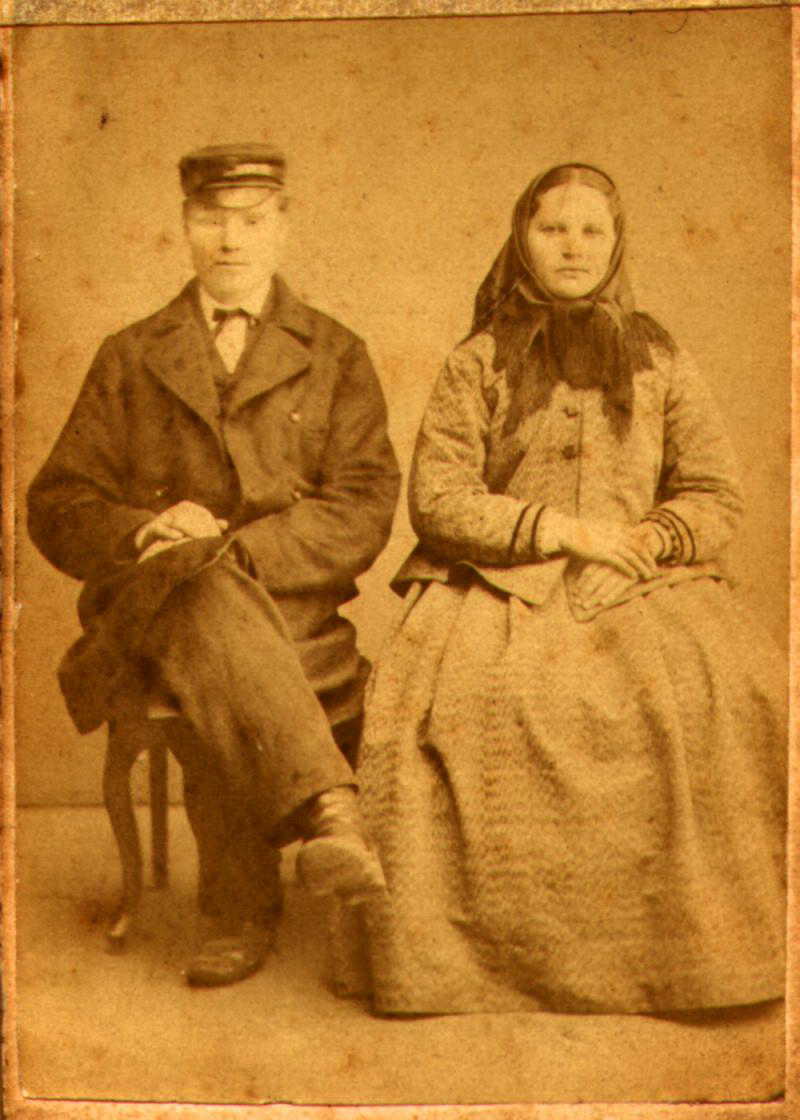So you’ve had your DNA tested and you’re thinking “Now what do I do?” or you’re still wondering if it’s worth $80 to $125 to take a test? Will it help with your traditional genealogy research? Will it help you find your birth family if you’re adopted? Will it tell you if your great-grandmother was Cherokee? The answer to all of those questions are “yes” under certain circumstances. If you have been doing traditional genealogy research, a DNA genealogy test will help you confirm the research you’ve already done, open new avenues for research and help you tear down those genealogy brick walls. I used AncestryDNA ancestrydna.com because I already had a family tree created with traditional genealogy on Ancestry.com but other well-known genealogy companies such as 23andMe www.23andme.com and FamilyTreeDNA www.familytreedna.com.
First you need to realize that the test is much more than your ethnicity estimates. Sure it’s cool to learn that you are 27% British, 23% Scandinavian, 20% Irish, 17% Western European, and 13% Southern European, but that’s only part of the story. Start with those percentages and explore the history of these places to see how they came to migrate to the U.S. to create the unique combination that is you! If you study history those percentages will make more sense and seem more probable. Then focus on the parts that don’t seem to fit with what you already know about your family tree. The percentages listed above are approximately the same as the percentages I was given for my ancestry and I was very surprised that my Scandinavian percentages were so high. I have only one Scandinavian in my direct ancestry, my Swedish Great-Grandmother so I expected Scandinavian ancestry below 10%. I learned that because the Vikings did so much traveling, warring and settling in Northern Europe there is a lot of Scandinavian DNA in Britain, Ireland, Scotland, and in Eastern and Central Europe. So my other European ancestors also likely contributed greatly to the high Scandinavian DNA count. I also didn’t expect so much DNA from Southern Europe so I need to search my ancestral lines to find those mysterious Italian or Greek ancestors.
It’s the DNA matches you get that are the real value in doing these tests from a genealogy research standpoint. After I did the DNA test I had hundreds of cousin matches to look through. If I could find out how I was related to these people they could help me with my genealogy and I could help them in return. I currently have 730 fourth cousin or closer matches on AncestryDNA and thousands of more distant cousins. One first cousin, six second cousins, twenty third cousins and the rest fourth cousins. If I was looking for birth parents those close matches would be really helpful, we could compare our shared matches, find out how we are related and narrow down who must be the biological birth parents. Since I’m trying to expand my already large family tree I’m really more interested in those fourth through eighth cousins because we will have common ancestors who lived 100-300 years ago. Therefore, they may be able to help me take my research back to Europe and beyond.

A good example is how I found out more about my great-grandmother Hanna Andersdotter from Sweden (pictured at right). Initially I knew very little about her. Only that her original maiden name was Anderson (or Andersdotter for a woman) and that on every U.S. census she said that she was born in Sweden. Through traditional research I found her on an immigrant ship from Sweden to the U.S. with her mother which led me to find her father and the rest of her immediate family. Going further back into Sweden seemed impossible. But the breakthrough came soon after I did my DNA genealogy test, when I was contacted by one of those distant cousins who lived in Sweden. Our common ancestor had to be on that one Swedish line. She found our common ancestor was Catharina Hakansdotter who is my 5th Great-grandmother and was born in Sweden in 1764. Then she kindly sent me seven generations of my direct line in Sweden, to ancestors born in the 1600s. This is something I never would have been able to do myself here in the U.S. and not speaking Swedish.
You can also download your raw DNA results and enter it into other websites to get even more matches and additional information. Some of the websites I’ve tried are:
- GedMatch gedmatch.com – additional genealogy matches and information
- DNALand https://dna.land – additional genealogy trait and ancestry information
- MyHeritage DNA myheritage.com/dna – additional genealogy matches
- Promethease https://promethease.com – genetic health information
All the above are free except Promethease which charges only $5-$10 for a health report. You need to create a user account and password at all of them to protect your private information.
Good luck in your searches!
Elaine Hayes – Assistant Manager Reference Services / Special Collections Librarian
